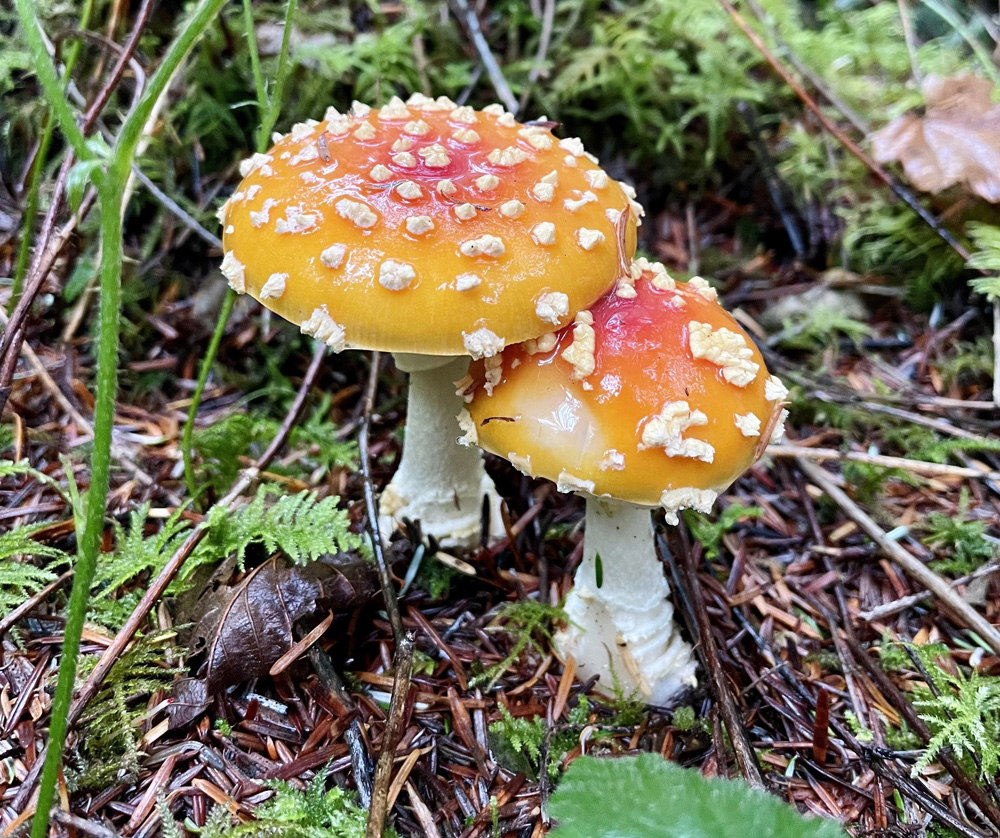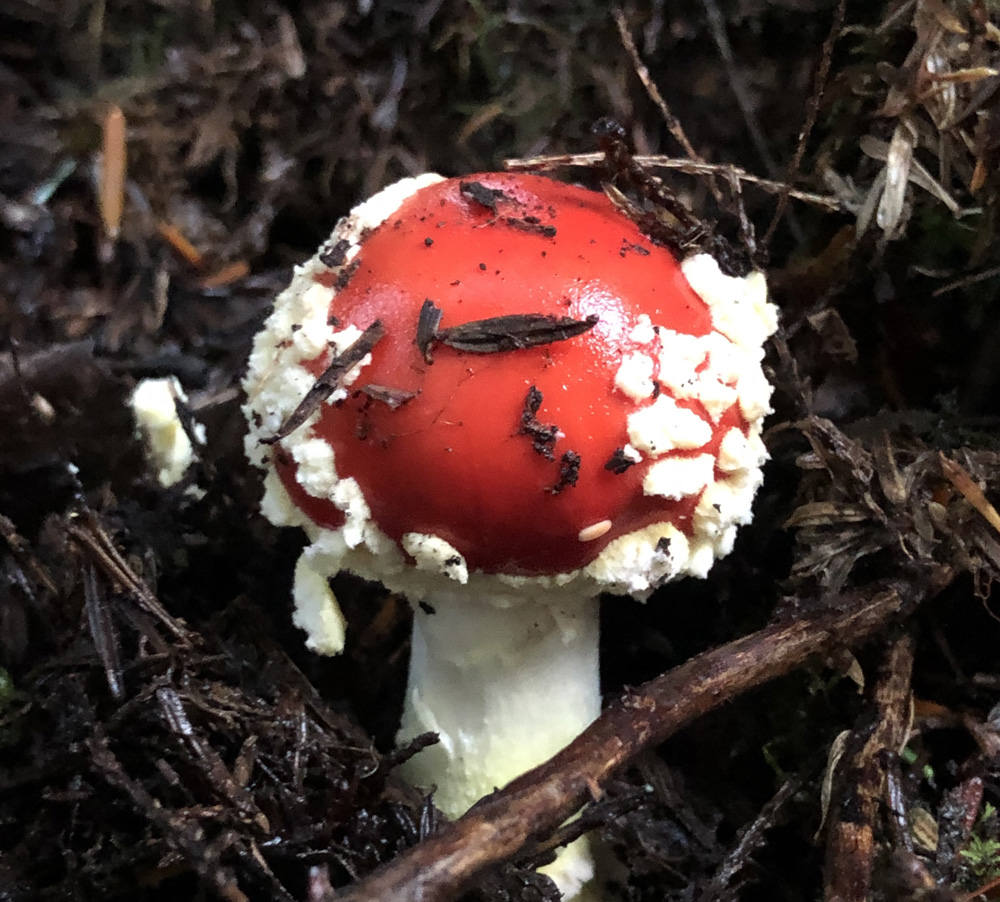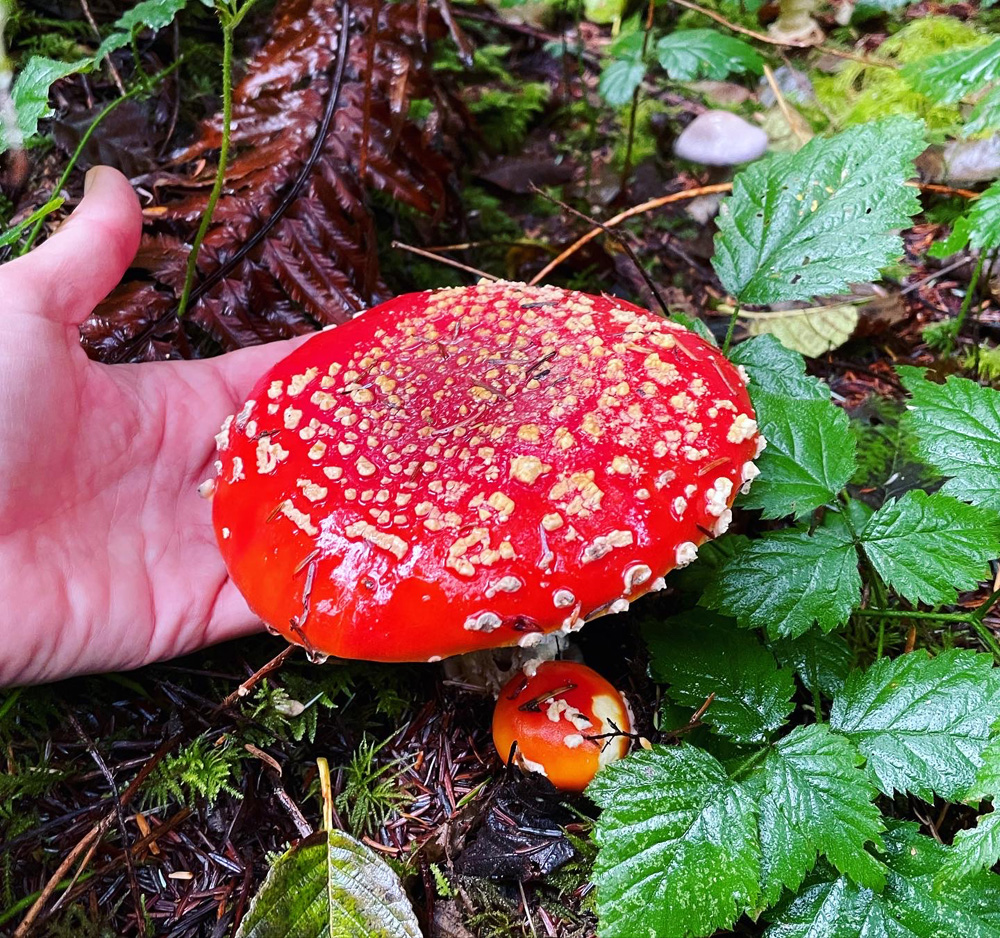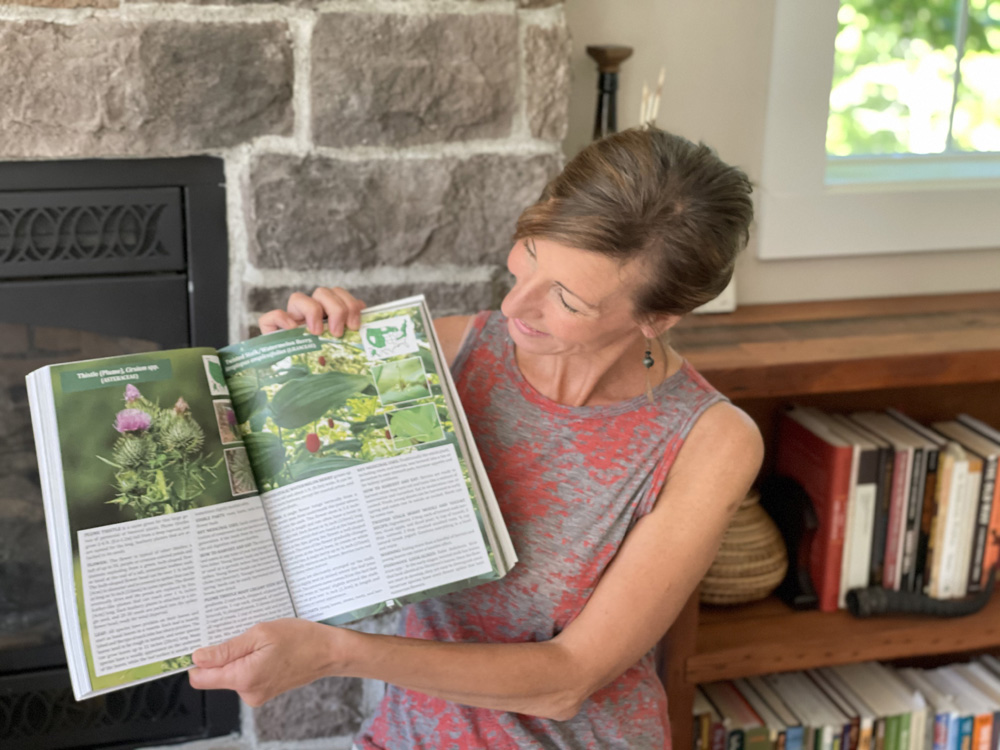One Fungus That is Impossible to Miss
Seemingly straight out of a fairytale, Amanita muscaria mushrooms are difficult to miss with their bright, cherry-red caps covered with white wart-like bumps. For over 4,000 years in India and Iran it has been used in the sacred drink “soma”, while Siberian shamans gifted this gorgeous mushroom to those they held dear in late December. It also has played a role in a variety of fairy tales as well as Alice in Wonderland. Some believe that muscaria was the inspiration behind Santa Claus and his red and white robe.3
These beautiful mushrooms grow directly on the ground — instead of, say, on a tree or fallen log. They are large and hearty and the stem is bulbous in shape. Many cast a cautious eye towards these vibrant mushrooms, believing them to be poisonous. But with proper handling, they can be a nice addition to your next meal and may even provide a healthy boost.
Amanita muscaria are known for their medicinal properties that help to calm the central nervous system and provide stress resilience. What’s more, it has been used to provide relief from menopause, sciatica, pain, sore throats, arthritis, and more. Interestingly, Amanita muscaria interacts with GABA receptors in the brain. This is the same calming neurotransmitter that makes us social, happy, and focused.
Below are several tips for how to locate, harvest, and prepare Amanita muscaria safely during your foraging adventures!

Wild Mushroom Safety
If you are just starting out with foraging mushrooms, I strongly recommend that you work with a knowledgeable and experienced expert. As I wrote in “Discover the Joy of Wild foods, Foraging, and DIY Spore Prints“:
“While foraging is relatively straightforward, there are a few guidelines to keep in mind. The most important is that before consuming any wild plant, make absolutely certain it is not poisonous. If you are the least bit unsure, consult a reputable expert. This is crucial, especially with wild mushrooms. I recommend you find an experienced mentor if you’re just starting out. A good field guide is also necessary as it will help you to properly identify and learn about new plants. And make sure to educate yourself about the dangerous species native to your area before heading into the wild to forage.”
One look-alike to Amanita muscaria is Amanita flavoconia, which is smaller in size. Another is the brown-capped Amanita pantherina. This mushroom should be avoided due to potential toxicity concerns, along with the deadly Amanita bisporigera (Death Angel).
Mushrooms in the Amanitaceae family contain varying degrees of ibotenic acid — including Amanita muscaria. When the mushrooms are consumed fresh or dried without boiling first, this compound converts to the psychoactive muscimol when ingested. It is believed that spring mushrooms contain much more muscimol compared to autumn mushrooms. If you eat too many muscaria mushrooms without proper preparation, they can be deadly.2 This is why it is crucial to boil the mushrooms twice with a change of water in-between before consuming or drying for later use. Post-boiling (twice) I then cook these mushrooms as I would any other mushroom. They are delicious!
*** You should never eat Amanita muscaria raw as it is difficult to measure the level of ibotenic acid in each mushroom. Raw muscaria are toxic for children, the elderly and health-compromised, as well as dogs.

Identification
The fruiting bodies of Amanita muscaria can grow up to 12-inches in diameter and 6-8 inches tall. The cap can range from bright red to orange-red and pale orange, depending on the regional location and stage of development. Raised white spots are widely distributed on the cap.The close white gills are not attached to the stalk. With a bulbous base, the stalk ranges in color from off-white to white. The spore print is white.2

Where do they grow?
Amanita muscaria can be found throughout the United States in USDA Plant Hardiness Zones 1-13. The mushroom grows in deeply shaded areas with less than 2 hours to no direct sunlight. Muscaria will grow in coastal, mountainous, and Piedmont regions. They are often found as a single mushroom, scattered, in dense groupings, or “fairy rings” within mixed hardwood-pine forests.2
Health Benefits
Professor David Nutt, a neuropsychopharmacologist who researches psychoactive compounds, believes Amanita muscaria is a functional mushroom that has strong stress-relieving, pain-reducing, and longevity-boosting properties. He notes there is great potential for this mushroom in the areas of anxiety, depression, and in the treatment of epilepsy and Parkinson’s disease. Clinical trials are underway to establish if the bioactive compounds in muscaria are antioxidant and anti-inflammatory as well.
Deepen Your Knowledge of Wild Foods
If you would like to learn more about foraging and wild fare, my book The Forager’s Guide to Wild Foods: Edible Plants, Lichens, Mushrooms, and Seaweeds is for you!. Within its pages, you will find over 400 medicinal and edible wild foods that can be foraged throughout North America.
Each entry has an introduction, a range map, edible uses, common medicinal uses, poisonous look-alikes, a description of the flowers and leaves for ID, excellent color photos, harvesting instructions, and a simple recipe.
Wishing you abundant and happy foraging!
Nicole Apelian
References
- Rampolli, F. I., Kamler, P., Carnevale Carlino, C., & Bedussi, F. (2021). The Deceptive Mushroom: Accidental Amanita muscaria Poisoning. European journal of case reports in internal medicine, 8(3), 002212. https://doi.org/10.12890/2021_002212
- “Amanita muscaria“, North Carolina State University. https://plants.ces.ncsu.edu/plants/amanita-muscaria/
- “Fly agaric: Amanita muscaria”, Woodland Trust UK.
https://www.woodlandtrust.org.uk/trees-woods-and-wildlife/fungi-and-lichens/fly-agaric/





